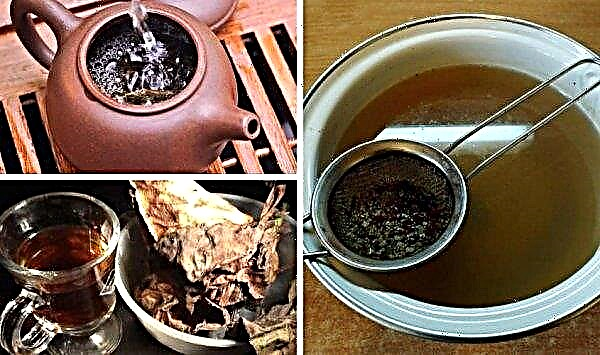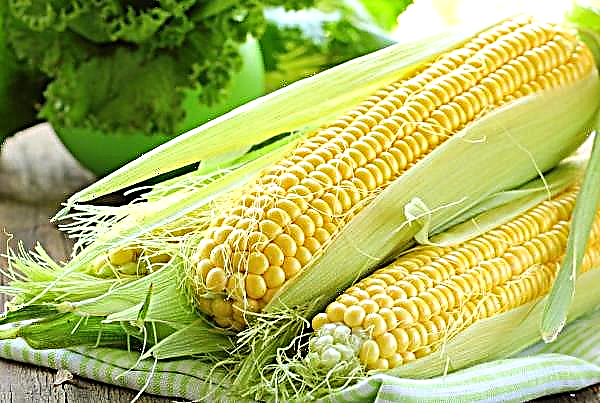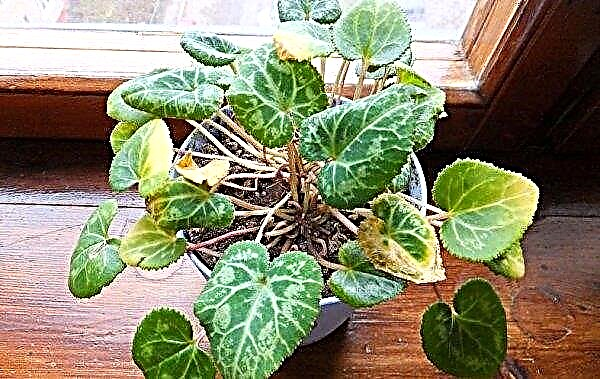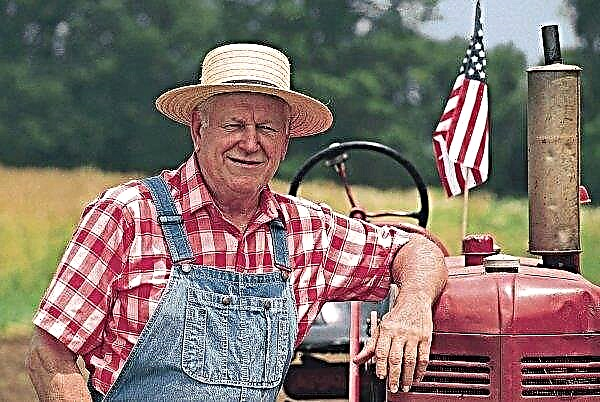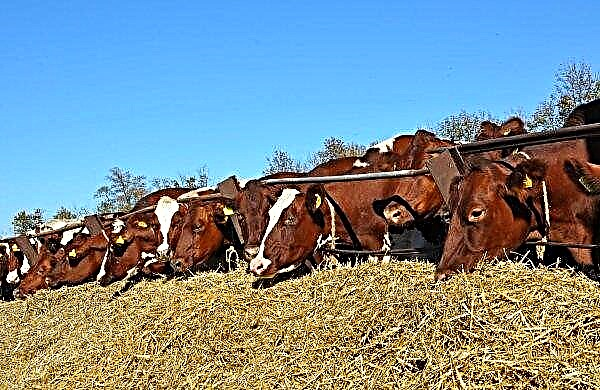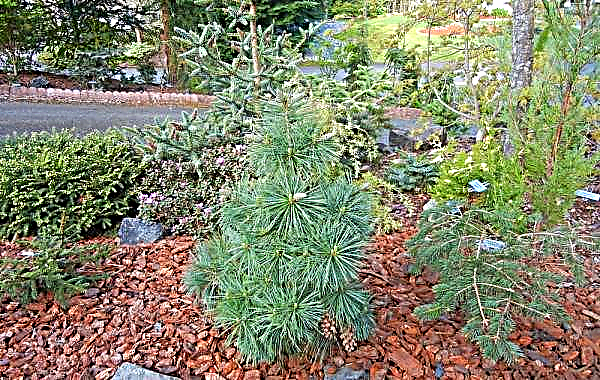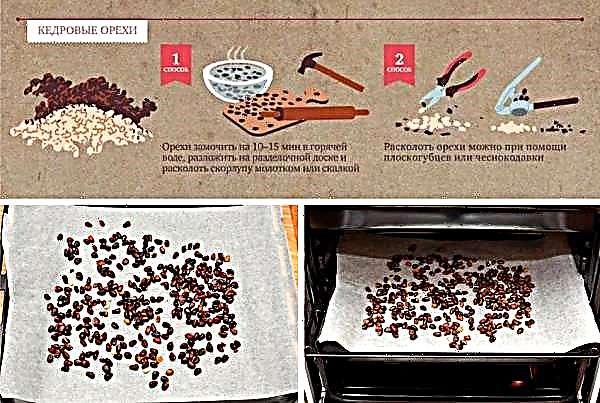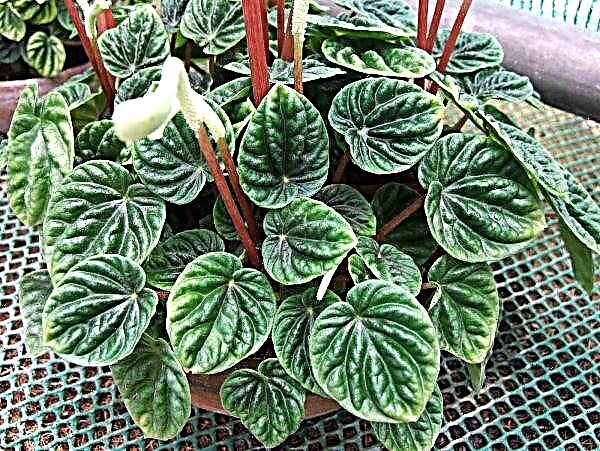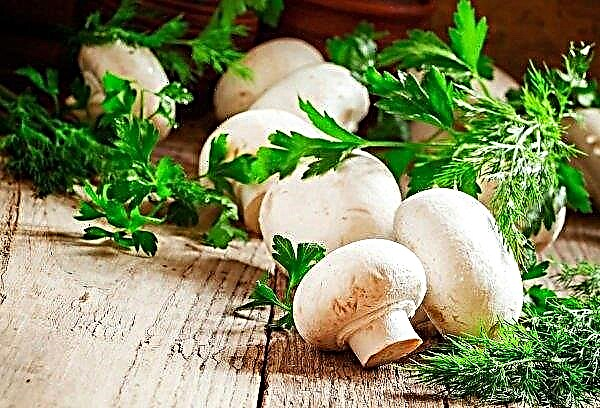More recently, the efforts of Siberian scientists brought to light a new tomato variety. The name "buffalo heart" speaks eloquently about the shape and size of tomatoes. There are other positive qualities. And although this variety is not yet in the State Register, it has already taken its place in the hearts of many tomato lovers. This article is about the features of the pink “heart”, as well as the rules for planting and caring for it.
Grade description
The main characteristics of the variety include the following:
- determinant, mid-season (100 - 115 days);
- does not have similar hybrid varieties;
- undersized bush (80 cm in open ground and 100 - 180 cm in a greenhouse), not standard; seedlings frail, but then grows stronger, few leaves; 3-6 fruits are tied on one hand;
- grows in all regions, withstands drought, frost and rain, survives well in field and greenhouse conditions;
- large fruits (400 - 1000 g), raspberry-colored, heart-shaped, the skin is thin and strong, there are few seeds, the flesh is flesh;
- fruit flavor: sweet, versatile;
- application: both fresh and for the preparation of preservation and various dishes;
- the harvest period lasts all summer;
- yield: up to 10 kg per plant (with good care);
- the fruits tolerate transportation and storage well.

Advantages and disadvantages
- The advantages of the variety include:
- unpretentiousness in leaving;
- undemanding to conditions;
- resistance to disease, drought and frost;
- non-hybrid: high germination of own seeds;
- high yields;
- harvesting lasts all summer;
- good taste of fruits;
- universal application in cooking;
- good transportability and long shelf life.
- The disadvantages include only:
- large fruits are not suitable for canning in general;
- without top dressing, the fruits are smaller.
Sowing seeds for seedlings
To be sure of the future harvest, it is best not to buy seedlings, but to grow them yourself. Since the "heart of the buffalo" is not a hybrid, seeds for planting do not need to be bought every year, they can be collected from tomatoes grown by hand. Judging by the reviews of experienced gardeners, their seeds have even better germination than purchased. Regardless of whether the seeds were bought in the store or collected from their fruits, their sowing is carried out in the same way.
The soil
The choice of soil for sowing needs to be approached seriously. It must be nutritious and loose. If you buy a special substrate for tomatoes, you can be sure of its balanced composition. If you prepare the soil yourself, then it must meet the following requirements:
- composition: peat, land from the garden, sand and humus in a ratio of 2: 1: 1: 0.5, with the addition of complex fertilizer (with a high content of phosphorus and potassium and a minimum of nitrogen);
- prepared soil should be decontaminated: steamed in a double boiler a week before sowing;
- the earthen mixture should be loose, let air through and absorb water well: add soil disintegrants (sphagnum, vermiculite or coconut).

The timing
Seeds should be sown 60 - 70 days before transplanting seedlings in open or closed ground. If sowing is carried out in March, then the crop of greenhouse "hearts" can be harvested in June. For an open area, the seeds are sown a little later. About 7 days after sowing, the first shoots should appear. When 2 real leaflets appear on the sprouts, they must be dived separately.
Container for growing
To grow tomatoes, you need two types of containers:
- for sowing seeds before picking: special or home-made boxes, trays, cassettes, whose wall height is 8 - 10 cm;
- for pickled seedlings: disposable plastic cups, seedlings, peat pots, the size of which is not less than 12 x 17.
Important! Both the seed boxes and the dive pots should have drainage holes.
Seed preparation
Germination of seeds depends on their quality. If you buy seeds from a reliable producer, then they should already be fully ready for planting. Seeds of dubious origin and collected from your garden must be prepared for sowing. Usually spend several preparatory stages:
Completed 2 or 3 of these steps will already increase the percentage of seed germination.Sowing seeds
A box or other container for sowing seeds is filled with a pre-disinfected substrate and moistened. Seeds are sown as follows:
- groove depth: 1 - 1.5 cm;
- distance between furrows: 3 - 4 cm;
- distance between seeds in a row: 1.5 - 2 cm.
Important! If the planting is too dense, the seedlings will become very long and become vulnerable to fungal infections.
Seedling Care
Before planting seedlings in a permanent place, it needs careful care. She needs suitable conditions:
- The place does not matter until emergence. The main thing is to be warm. When they hatch, it is advisable to put the box on a bright windowsill.
- Temperature: seedlings are comfortable at + 22 ° C during the day and at + 16 ° C or + 18 ° C at night.
- Lighting is required within 12 hours per day. In the absence of a solar windowsill, phytolamps can be used, which should hang at a distance of 50 cm from the seedlings. The first 3 days after germination, it is advisable to light seedlings around the clock.
- It is necessary to water with settled water at room temperature as the soil dries. Only pickled sprouts need watering every 7 days. And when they have 5 leaves, they water it once every 4 days. It is necessary to moisten the earth, but not the bush.
- It is possible to feed already 2-week shoots a weak solution of complex fertilizers (this includes "Agricola", "Plantafol", "Master") no more than once every 10 days.

Seedling hardening
A few weeks before planting seedlings on the bed (at least 2 weeks), they need to begin hardening. This can be done by taking containers with young tomatoes into the fresh air (onto the balcony, into the courtyard in a shaded area). Gradually, the duration of the procedures should increase. Hardened plants experience less stress from transplanting, take root more quickly in a new place and are not susceptible to disease.
Planting seedlings in a permanent place
Seedlings are ready to "move" to a new place when she will be at least 2 months old. At this age, the height of the stems reaches about 30 cm, and on them 7 to 9 strong leaves. Seedlings of the "heart" often look long, thin and frail, but after transplantation they strengthen. Seedlings of "buffalo heart" are planted in open ground when there is no longer a threat of frost, and the weather is stable and stable. Usually this is the end of May or the beginning of June.
In greenhouses, planting is carried out 2-3 weeks earlier. A place for tomato beds must be selected and prepared in advance. The pink “heart”, like other tomatoes, loves sunny places protected from strong winds. He does not like moist soils in the lowlands. Therefore, it is better to plant them on the hills, where groundwater does not reach. A suitable soil option is loamy soil that has previously been fertilized with organic or mineral top dressing. Bushes of this variety love space. Therefore, the planting scheme is as follows: 3 to 4 seedlings per 1 square meter. Each well should be fertilized, sprinkled with ash and well watered.
Therefore, it is better to plant them on the hills, where groundwater does not reach. A suitable soil option is loamy soil that has previously been fertilized with organic or mineral top dressing. Bushes of this variety love space. Therefore, the planting scheme is as follows: 3 to 4 seedlings per 1 square meter. Each well should be fertilized, sprinkled with ash and well watered.
Growing Features
Growing healthy, strong seedlings is only half the battle. To get the most out of her, you need to continue to properly care for her. "Buffalo Heart" is a rather unpretentious variety and does not require special attention. He has the same care needs as other tomatoes.
Watering
The "heart" does not like a lot of water, so it should be watered moderately. Up to setting fruit, watering is to moisten the soil about 1 to 2 times a week. During the period of growth and ripening of the fruit, you need to water the bushes more often and more abundantly. For tomatoes, how and when they are watered is important.
Water should be poured from below under the root. You can not wet the whole bush, the plant does not like this. If you water it from above, it can lead to undesirable consequences: a fungal infection, the flowers will fall off, and the fruits will slowly set and ripen. Irrigation water should be warm and settled. The best time for the procedure is morning and evening.
Top dressing
Starting from the 10th day in a permanent place (in the greenhouse or in the garden), seedlings can already be regularly fed. In different periods of tomato development, different top dressings are suitable:
- nitrogen fertilizers are necessary for seedlings to grow green mass; they are suitable during the period of growth of bushes;
- potash and phosphorus fertilizers are necessary during flowering and fruit setting;
- solution of bird droppings is a universal fertilizer in which there are all the nutrients necessary for tomatoes.
Stepson
The "buffalo heart" as a large-fruited tomato needs to be stepsoned, that is, to remove the extra stepchildren. Experienced gardeners advise bushes of this variety to lead in two stems. This means that all but one side branch is regularly removed. Brushes with fruits develop on the main stem and left side branch.
A stepson plant spends its supply of nutrients not on the growth of unnecessary branches, but on the development and ripening of fruits. Tomatoes on such bushes are large and ripen earlier than without pinching. The regularity of the procedure is once every 10 days.
Video: pinching tomatoes
Soil care
The usual soil care measures are also required:
- weeding weeds as they grow so that they do not impede the development of a tomato crop;
- loosening the soil around the bushes after each irrigation saturates the earth with oxygen and allows it to heat well;
- mulching with peat, straw or sawdust retains moisture in the ground, which means it reduces the cost of effort, time and water for irrigation;
- hilling helps the penetration of oxygen into the soil and its nutrition, promotes the growth and strengthening of roots and stems.
Bush tying
Although the "heart of the buffalo" is considered a stunted variety, it still needs a garter. There are several reasons for this:
- under the weight of large and heavy fruits, the branches can not stand and break, and the support will prevent this;
- the fruits of the lower tier will not lie on the ground and rot;
- the bound plants are well spread, so the tomatoes get enough sunlight and fresh air;
- it is easier to take care of the tied bushes: watering, hilling, mulching.
 There are different ways of garter bushes, which are suitable for different varieties and a different number of seedlings. For a low pink “heart”, the classical system of pegs is suitable, which should be 20-30 cm higher than plants. Each support is fixed near a separate bush, and branches are freely attached to it. You can start tying up seedlings in about a week, when it passes adaptation in a new place.
There are different ways of garter bushes, which are suitable for different varieties and a different number of seedlings. For a low pink “heart”, the classical system of pegs is suitable, which should be 20-30 cm higher than plants. Each support is fixed near a separate bush, and branches are freely attached to it. You can start tying up seedlings in about a week, when it passes adaptation in a new place.Preventative treatment
One of the significant advantages of the "buffalo heart" variety is its resistance to tomato diseases and pests. But due to errors in planting or caring for seedlings, it is possible to provoke the development of one of the fungal diseases (for example, late blight, blackleg, septoria or brown spotting).
Therefore, for prevention, it is advisable to treat the plants with the corresponding fungicides (Phytosporin, Previkur, Ridomil Gold, Quadrice or Revus). This will negate the risk of illness.
Harvesting
Hothouse "hearts" begin to be collected in June, and garden ones - in July. Alternating fruit ripening lasts all summer and until autumn cold weather. If you followed all the rules when sowing seeds, planting seedlings and caring for them, and the weather conditions were favorable, then for the entire harvest season you can collect about 10 kg of giant tomatoes from one bush. The "buffalo heart" variety is beneficial to grow both for yourself and for commercial purposes. And although the process requires some effort, this work will not be in vain. The reward will be a plentiful harvest of large and tasty tomatoes.
The "buffalo heart" variety is beneficial to grow both for yourself and for commercial purposes. And although the process requires some effort, this work will not be in vain. The reward will be a plentiful harvest of large and tasty tomatoes.

